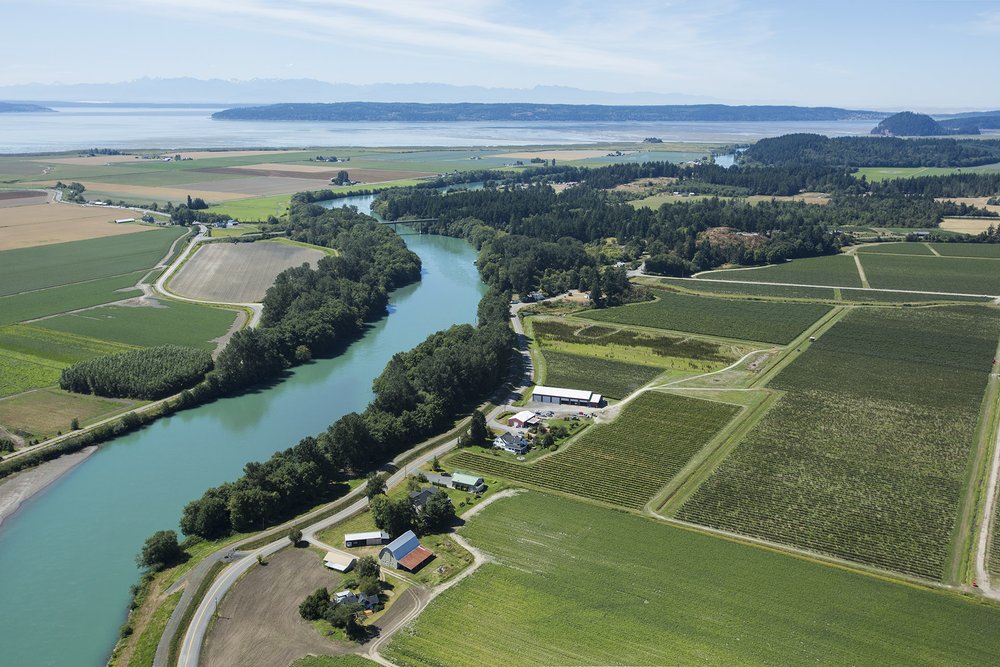By Heather Cole, Community Relations Manager
Seven years ago, I was sitting with a friend having a cup of tea on a drizzly Pacific Northwest day at Batdorf and Bronson Coffee Roasters. Our conversation drifted like the rain outside, but one moment crystalized in my head. We both wondered could we ever recover salmon and create more resilient rivers and estuaries?Do we do more of the same or did we need a new approach to this daunting challenge? She offered; You should check out Floodplains by Design, it is this new program where local communities are trying this experiment — something called integrated floodplain management (IFM). I was intrigued.
Aerial view of the Skagit River Delta. Photo by Marlin Greene/One Earth Images
Flash forward seven years later. There are so many examples of what integrated floodplain management looks like across the state. Local floodplain practitioners and leaders have found a new norm on how to manage floodplains that reaches across disciplines and backgrounds, digs deep to find locally driven solutions, doesn’t shy away from those difficult conversations and most of all gets work done on the ground. Levees are set back, new side channels are created, communities are more protected from flooding and agricultural land is protected — to name a few examples. It takes a village to do this work.
Now, we have a snapshot of this IFM work, thanks to the Puget Sound Institute, which just completed a “Synthesis of Integrated Floodplain Management in Selected Puget Sound River Deltas.” The synthesis highlights IFM groups in the Nooksack, Samish, Skagit, Stillaguamish, Snoqualmie, and Snohomish river basins in the Puget Sound Region. These basins were selected based on their large area of historic contiguous habitat and their significance to local salmon recovery efforts. Moreover, additional examples include: Floodplains for the Future, operating in the Puyallup River watershed, and the Yakima River Basin Integrated Plan, operating in the Yakima River Basin.
Over the Snohomish River basin, looking up the Snoqualmie River. Photo by Paul Joseph Brown/LightHawk.
One of the purposes of this synthesis is to serve as a resource for IFM practitioners in the Puget Sound Region, to support broader awareness and insights into approaches, accomplishments and challenges. The synthesis will also serve to support the Habitat Strategic Initiative Lead with adaptive management of the Floodplains and Estuaries Implementation Strategy.
Seven years later, and over $200 million dollars spent in Floodplains by Design alone, we are seeing a new level of resilience, creativity and impact in our floodplains across the state. That isn’t to say we are done. We have more to go for sure. But this synthesis is a beautiful snapshot in time to see how far we’ve come, the work we have ahead and what we can all learn from each other along the way.
Banner photo by Paul Joseph Brown

